 One of my favorite types of video games to play are the building ones. Especially ones like Planet Coaster or Cities Skylines where I can create massive amusement parks or sprawling cities. Yet a while ago I got sucked into the desolate world of Frostpunk. It’s a post-apocalyptic city builder where you were trying to get your fledgling tribe of people to survive in a brutal, frozen wasteland. It was punishingly hard, but I still spent tons of hours playing it.
One of my favorite types of video games to play are the building ones. Especially ones like Planet Coaster or Cities Skylines where I can create massive amusement parks or sprawling cities. Yet a while ago I got sucked into the desolate world of Frostpunk. It’s a post-apocalyptic city builder where you were trying to get your fledgling tribe of people to survive in a brutal, frozen wasteland. It was punishingly hard, but I still spent tons of hours playing it.
Fast forward to 2022 and designer Adam Kwapiński (Nemesis, Lords of Hellas) brings us Frostpunk: The Board Game. Published by Glass Cannon Unplugged, this game seeks to recreate the rough life of a Frostpunker, but on your tabletop. Did he succeed? Let’s find out.
Gameplay Overview:
I could use up my entire word count just telling you how to play the game, so this is going to be a very, high-level overview. If you want the full rundown, you can download a PDF of the rules here.
Frostpunk comes with several scenarios, but the basic one tasks you with surviving through the end of an oncoming storm (if you’ve played the video game, you know what you will be up against here).
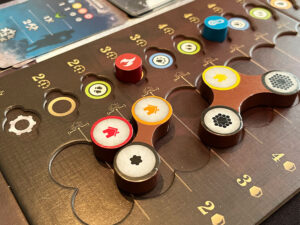
This cooperative game takes place over 9 phases each round. Every morning, you’ll move the round tracker and draw a morning event card. Spoiler alert: most involve difficult decisions, usually a choice between one bad choice or another. Then you’ll need to check on your generator, which provides heat for your freezing people. Too much stress on its core and it goes boom.
After that, you’ll check on the weather, which will inevitably get colder, requiring more oomph from your generator to maintain heat levels. At this point, you’ll also get to do some hunting and your scouts can explore outside the city.
Once all that prep work is done, you get to take your actions. You’ve got 3 types of meeples: workers, engineers, and children. You’ll use a worker placement mechanic to send your meeples out to the town to activate various buildings, gather resources, remove snow, proclaim laws, or construct new buildings. Some buildings, such as the Workshop or Medical Post can only be used by an Engineer. Outside of a few special cards, children are really only good at taking up space and sucking up your precious resources (much like in real life).
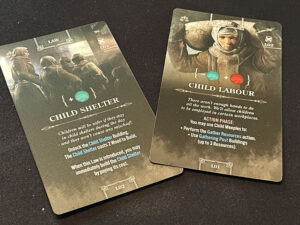
The important thing to note is that your generator, a big tower in the middle of the table provides heat for your buildings. You’ll need to add coal to it, which will heat up different zones and buildings. If a meeple takes an unheated action, they get sick and will eventually die, forcing you to lose hope.
Once you’ve taken all your actions, you draw a dusk card, which can be good or bad, depending on the choices you’ve made in the game. Then it’s time to feed all your citizens. Each round you’ll need to feed one of your 3 different citizen types. Finally, it’s time to sleep. Each meeple will need shelter or they get sick.
The round ends, and a new day will spring up. Throughout each round, the game will throw you curve balls via the places you explore, scenario cards, or dawn/dusk cards. There are about half a dozen ways to lose Frostpunk and one way to win. Complete the scenarios objective.
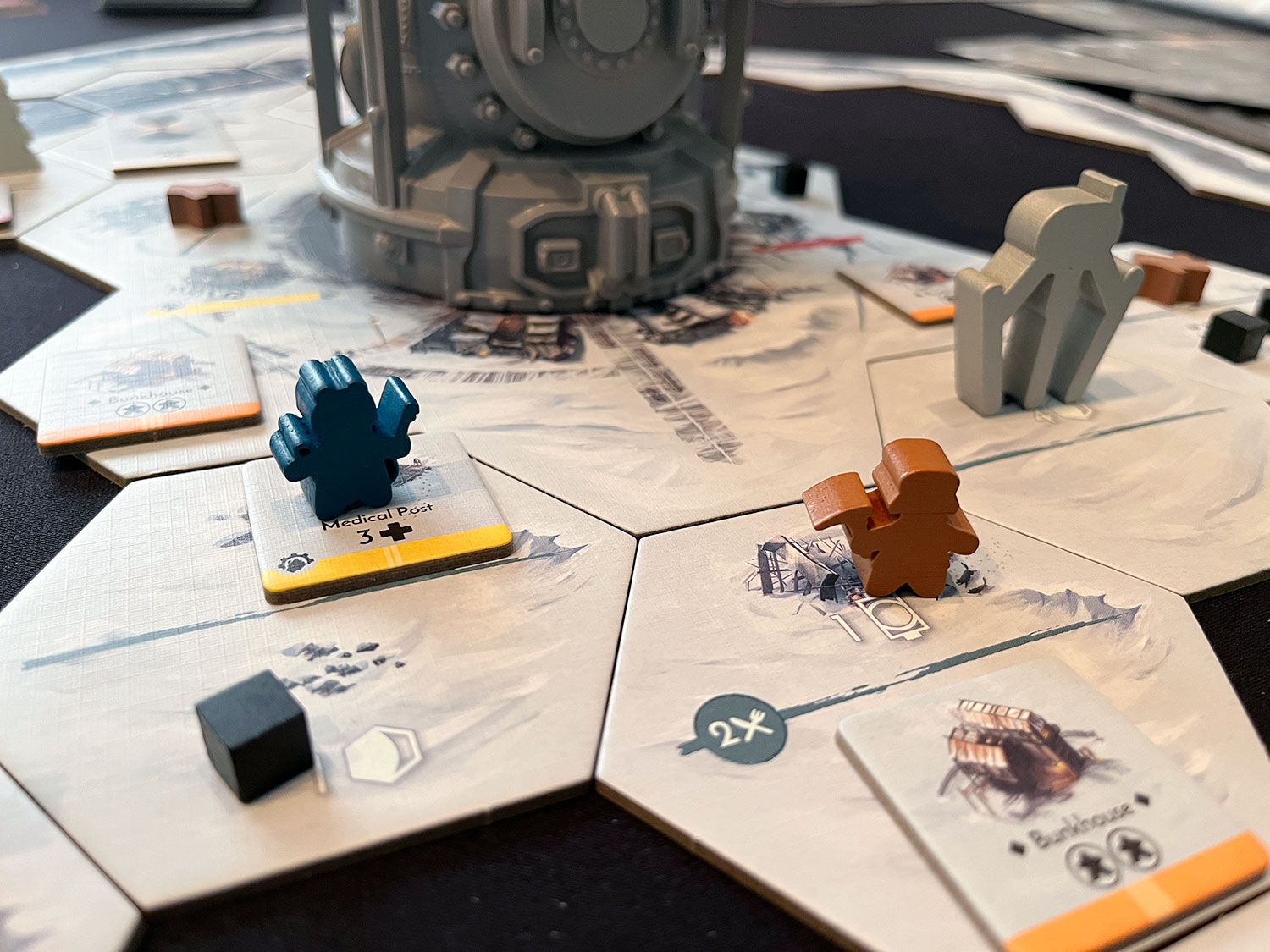
Game Experience:
Frostpunk: The Board Game must be one of the most complex games I own. The above overview is definitely a very rough go at the round structure. The game’s setup is 8 pages long…and that’s just to begin the game. The full rules clock in at 44 pages. Frostpunk is not a game for the faint of heart. Because not only does it have a steep learning curve, but it also can be punishingly difficult. I think I’ve won once…maybe twice in my dozen or so plays. Yet that’s where things get interesting for me. Because I’m not usually drawn to complex games with difficulty win conditions. Hell, I actually prefer the opposite of both of those.
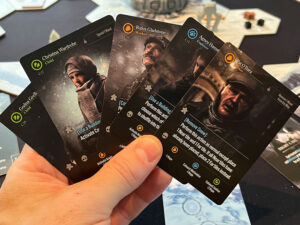
But Frostpunk keeps sucking me back in. It’s got a lengthy setup, lots of rules, is hard to win, and takes a few hours to play. But the gameplay is also incredibly rewarding. Every victory that you eke out you feel like you really earned. The more you play, the more you feel like you begin to understand the strategies of how to run your fledgling group of survivors. You’ll be pulled in 20 directions each round of where you need to focus your attention, and skipping any one of them can cause ripples throughout your town.
You’ve got workers to feed, resources to collect, scouts to send out, and children who need homes. And then a roving gangs might pop up, or a secret distillery in your town, or a group of survivors appears at your doorstep, which feels like “oh boyas, more hands to help with” and is quickly replaced by “where am I going to put them and how shall I feed these extra mouths?” There are no easy decisions in Frostpunk because there is just so much that needs to be done. Rarely will be able to casually place a worker because you really don’t need to do anything else that round.
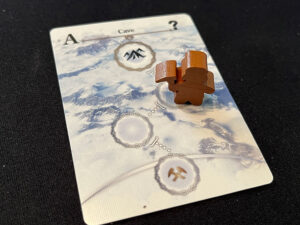
I feel like designer Adam Kwapiński played the video game a bunch and couldn’t decide what mechanics to port over… so he brought them all. As a fan of the video game, I can say that he absolutely captured the feel of the video game on your tabletop. From quirky laws to mysterious events to just trying to survive one more day as the generator breaks down, citizens complain to you, and you have nowhere to stick these 3 new children. It’s all there, for good or bad.
Speaking of bad, as much as I’m gushing over Frostpunk, it’s not all roses. For one thing, the game is a Table H-O-G. Not even counting the central city board and tiles, you have 7 other sideboards and tracks to worry about. Add on to that 30+ different building tiles, a half a dozen or so decks of cards, meeples, resources, tokens… it all adds up. Could the game have been streamlined some? Probably. But I can say, while the game is complex, it doesn’t feel complicated. Everything makes sense. So, despite the sprawling mass of components, everything has a function that feels at home with what it’s for.
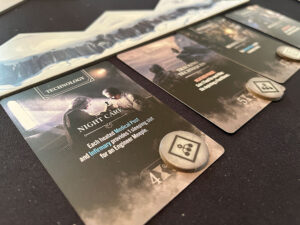
The real question comes down to if you can handle the game’s difficulty. You will lose at Frostpunk…a lot. The game makes no apologies for forcing you to use more coal to heat the frozen homes, but also asking you to store some for a bigger storm, oh yeah, and to also power your automatons. But wait, you couldn’t feed everyone, so they are angry, and your discontent tracker is going through the roof. People get sick and die and now your hope is dwindling. If you like a cooperative game with an 80%-win rate, then Frostpunk isn’t for you. I will say though that Glass Cannon Unplugged has released a set of official “explorer” society cards to make the game a tad easier for those looking for less of a challenge. I’ve used a couple of them and it’s a nice way to wrap your head around the various strategies and take a little longer for your society to fall apart.
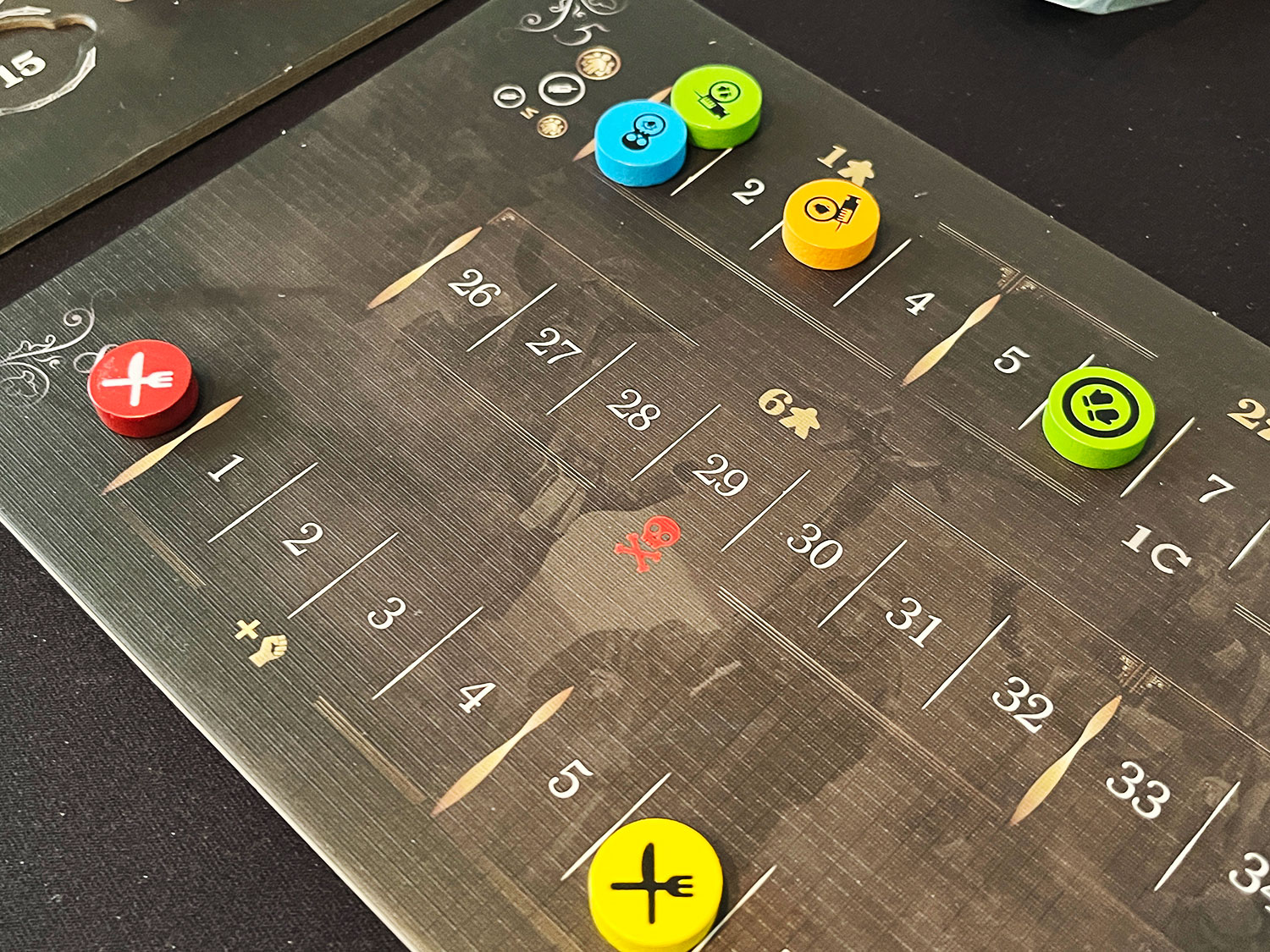
Final Thoughts:
I could continue on with Frostpunk: The Board Game for a while, but I’m already way over my word count. I will say, despite its steep learning curve, tablespace requirements, setup time, and difficulty to win, I absolutely love the game. It’s everything could I have wanted in a board game based on Frostpunk and then some. Despite my rarely liking games with all these features, Frostpunk won me over from day one. It’s thematic, addictive, and begs to be replayed over and over.
Final Score: 4.5 Stars – A thematic game that is able to pull in the feel of the video game in an epic tabletop experience.
 Hits:
Hits:
• Highly thematic
• Tons of tough decisions
• Lots of replay value
• Excellent production values
Misses:
• Table hog
• Punishing difficulty





















